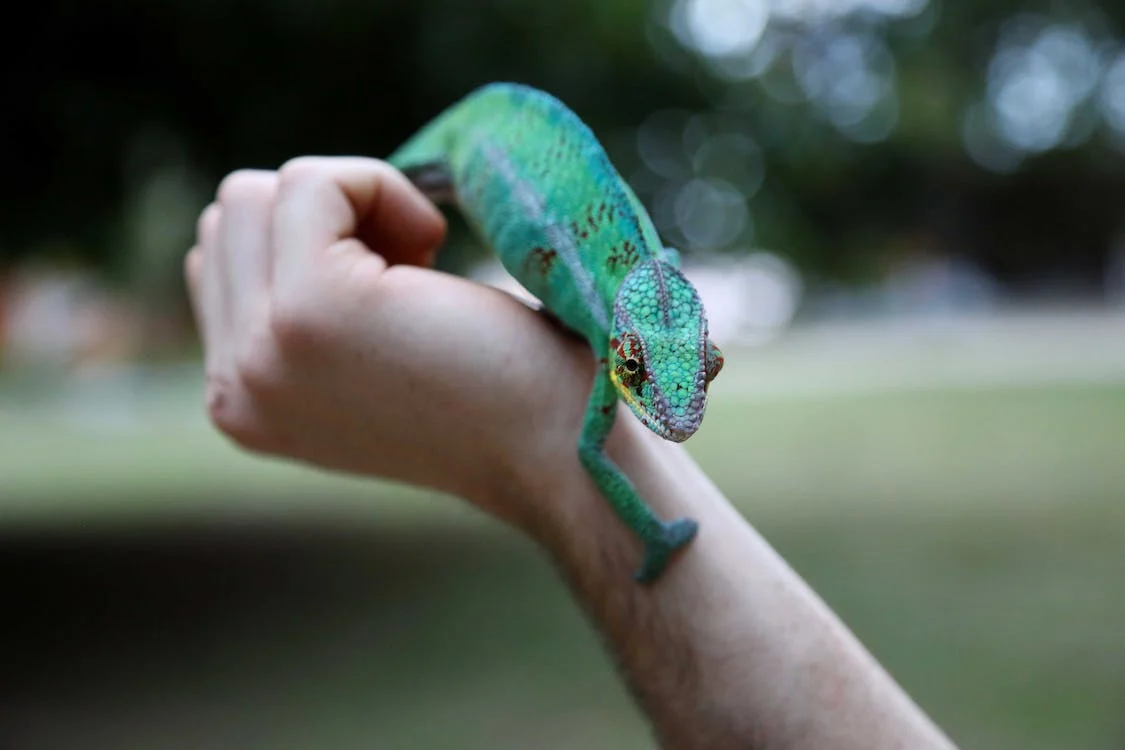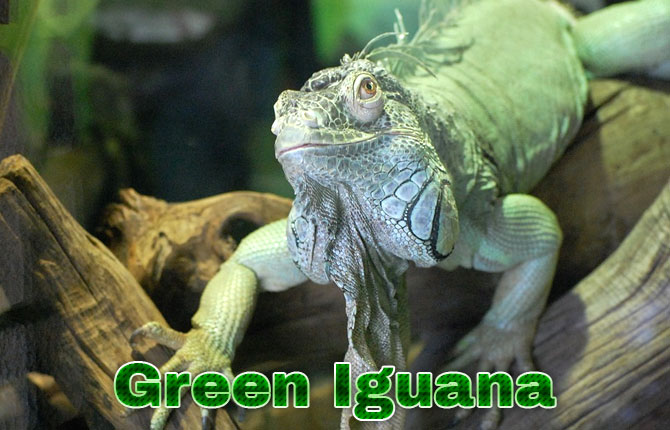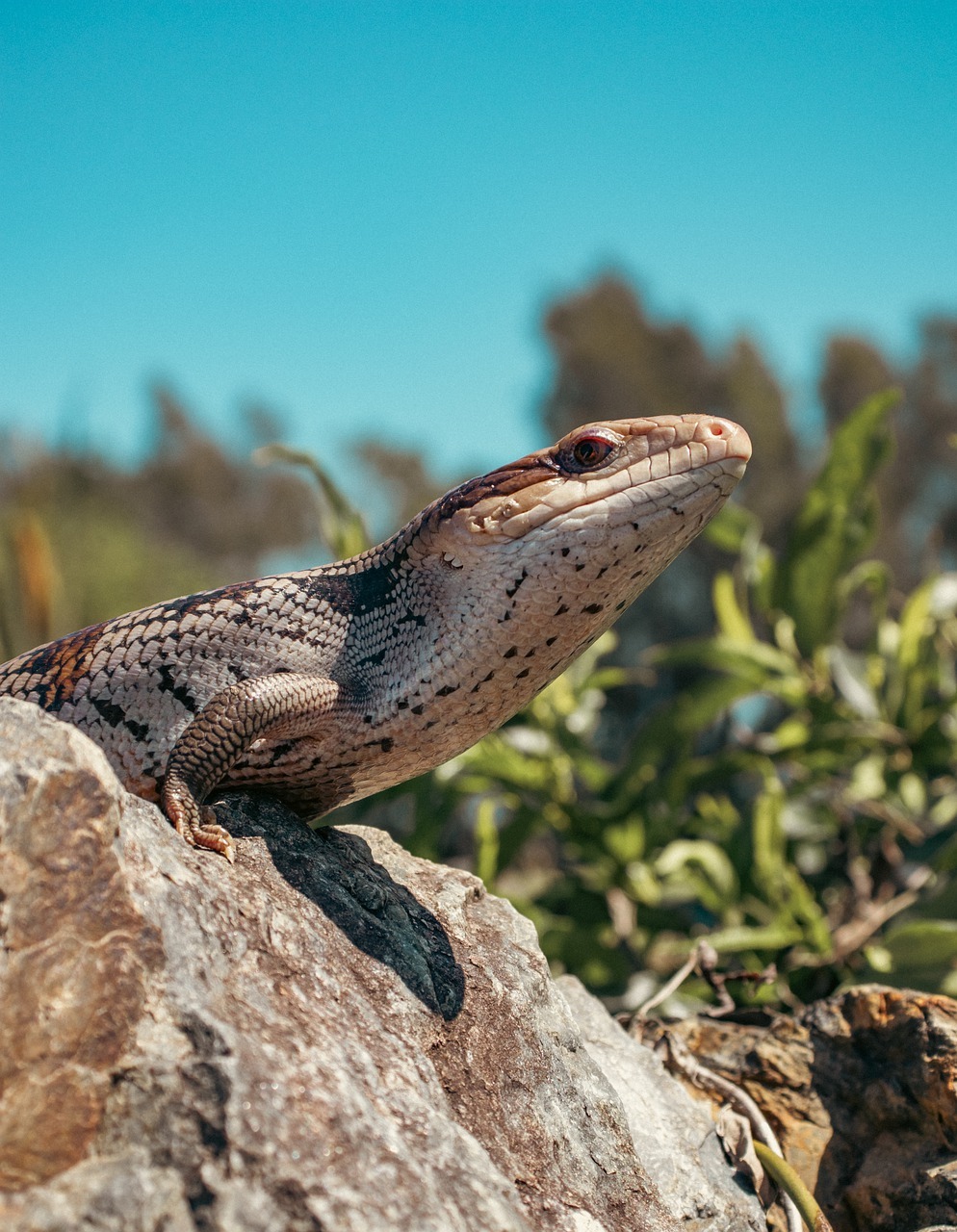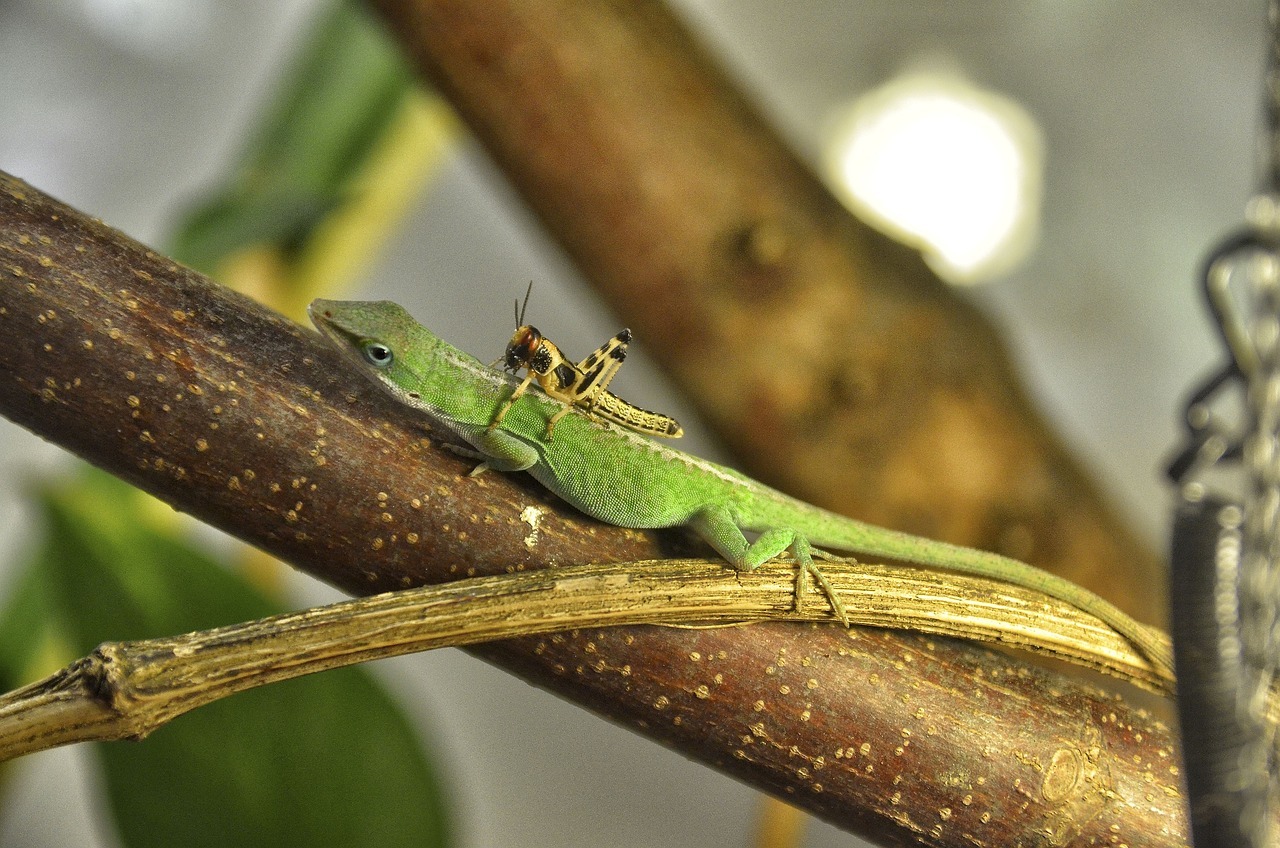Lizards as pets are getting more popular these days, and they fall under the category of exotic pets. Smaller lizards are usually good for beginners. Larger and more high-maintenance lizards, on the other hand, should be handled by experienced owners who are willing to devote their ample time to caring them.
We hope that this article will make a good guide if you choose to lizards as pets.
The green iguana is probably the most popular pet lizard. It can be easily found in many pet stores, and one of the most inexpensive lizards to obtain.
One thing to consider is the reptile’s size — a green iguana can grow up to 2 meters in length so it requires a large terrarium to move about. If you want to own such as big lizard but are confined in a small space, housing a green iguana is next to impossible.
One of the advantages of taking care of green iguanas is their diet. Unlike other lizards, a green iguana is a complete herbivore which is more practical meaning you don’t have to grow insects for food or go to stores which may not have them at a particular time.
Some green iguanas tolerate being handled, some are a bit more uncomfortable. They can even be hostile. It may take some training to get the animal used to being touched.
For first-time owners, the leopard gecko should make a perfect choice. It is small, measuring up to 25 centimeters long (when in captivity), so housing them in a smaller terrarium (at least measuring 60 cm x 40 cm x 40 cm) should not be a problem.
Leopard geckos generally prefer crickets, although they would eat any other kinds of insects. They could turn out to be one of the more expensive lizards to keep as they keep on eating their food until they refuse it. Adult geckos can eat up to 12 or 15 insects in a day, every two days.
These lizards are nocturnal, which means they don’t need much lighting as the other pet lizards do. Use a weaker type of lighting or do not even bother to use one.
The uromastyx is also known as the spiny-tailed lizard. These extremely sun-loving creatures originally come from the arid regions of India and North Africa. Many spiny-tailed lizards die in captivity due to the owner’s lack of understanding of their diet and suitable environment. That’s why you must be armed with pertinent knowledge about these reptiles before deciding to own one.
The uromastyx (or “uro” for short) prefer a hot and dry environment — they just love basking in the sun, and the heat makes their body to function well. Make a basking area for these creatures with temperatures reaching 120 degrees. They also tend to move around a lot, so a spacious enclosure should be needed. The urosmatyx are also burrowing animals, so provide their cage with a deep enough substrate or some lower spot for them to dig or hide. Uromastyx are generally herbivores, so they can eat any type of fruits and vegetables (not all types, though, as some like spinach or kale is dangerous for the animal).
These lizards could be quite expensive to keep, but otherwise, most of the species respond well to captivity. They also come in a wide variety of colors, and like other lizards, the uromastyx change their colors in response to the surrounding temperature.
Bearded dragons can be easily found at any pet stores. They are perfect for every type of owner, from the beginner to the experienced. The bearded dragon’s housing needs are relatively easy; it should be large enough to move around and have sufficient UVA/UVB lighting and a basking spot.
The bearded dragons are active and rather sociable pets. Unlike most types of lizards, they can respond to human interaction and handling quite well. They eat both insects and vegetables.
The blue-tongued skink makes a great pet for a variety of reasons. First, they have a long life expectancy (18 to 20 years). Second, they are generally docile reptiles and can be tamed easily. Third, the animal is omnivorous and would eat a wide variety of fruits and vegetables as well as insect and even some meat, poultry or rodent.
They are also relatively easy to keep. This reptile will appreciate a roomy cage with a deep enough substrate (the blue-tongued skink is a burrowing animal) as well as the right temperature for basking.
The Carolina anole is a small lizard. Small it may be, but you should actually need a bigger terrarium as this reptile is usually kept in groups. In their wild habitat, these lizards’ territory comprises of a male and a number of females. The males are highly territorial and would fight any other male that attempts to trespass his property. You may need at large enough terrarium to house a group of three or four (one male and two or three females).
They are docile animals, but they are also actually shy and may resist being handled. These reptiles may need to be comfortable in captivity before it would be able to become more extroverted.
The Carolina anole is insectivorous but sometimes it would feed on worms. On the maintenance standpoint, they are easy to take care of compared to other lizards. These reptiles can be easily found at several pet stores and are not too difficult to breed.






